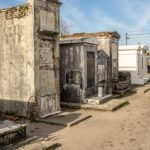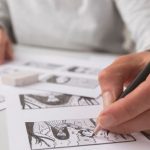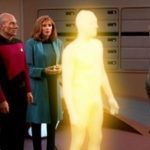 Animals
Animals  Animals
Animals  Weird Stuff
Weird Stuff 10 Weird Things People Used to Do at New Year’s
 Our World
Our World 10 Archaeological Discoveries of 2025 That Refined History
 Weird Stuff
Weird Stuff 10 Fascinating Facts You Might Not Know About Snow
 Miscellaneous
Miscellaneous Top 10 Things Crypto Was Supposed to Change & What Actually Did
 History
History 10 Huge Historical Events That Happened on Christmas Eve
 Music
Music 10 Surprising Origin Stories of Your Favorite Holiday Songs
 History
History 10 Less Than Jolly Events That Occurred on December 25
 Weird Stuff
Weird Stuff 10 Funny Ways That Researchers Overthink Christmas
 Politics
Politics 10 Political Scandals That Sent Crowds Into the Streets
 Animals
Animals 10 Species That Refused to Go Extinct
 Weird Stuff
Weird Stuff 10 Weird Things People Used to Do at New Year’s
 Our World
Our World 10 Archaeological Discoveries of 2025 That Refined History
Who's Behind Listverse?

Jamie Frater
Head Editor
Jamie founded Listverse due to an insatiable desire to share fascinating, obscure, and bizarre facts. He has been a guest speaker on numerous national radio and television stations and is a five time published author.
More About Us Weird Stuff
Weird Stuff 10 Fascinating Facts You Might Not Know About Snow
 Miscellaneous
Miscellaneous Top 10 Things Crypto Was Supposed to Change & What Actually Did
 History
History 10 Huge Historical Events That Happened on Christmas Eve
 Music
Music 10 Surprising Origin Stories of Your Favorite Holiday Songs
 History
History 10 Less Than Jolly Events That Occurred on December 25
 Weird Stuff
Weird Stuff 10 Funny Ways That Researchers Overthink Christmas
 Politics
Politics 10 Political Scandals That Sent Crowds Into the Streets
The Ten Most Obscure Facts about New Orleans
The Big Easy! The Crescent City, aka New Orleans, is one of the most famous cities in the world. Famous for Bourbon Street, the French Quarter, and Jazz. New Orleans, one of the oldest cities in America, celebrated its 300th birthday in 2018.
For over 300 years, this city has been a mecca of the bizarre and obscure. While the first recorded Mardi Gras was just outside modern-day New Orleans in 1699, this city has seen many firsts and many lasts. One could write indefinitely about what has happened within its city limits. But we have sifted through the history books and found the ten most obscure facts about New Orleans.
Related: Top 10 History Tour Of Lower Manhattan, New York City
10 The Longest Continuous Bridge in the World
The Lake Pontchartrain Causeway spans 23.86 miles (38.4 kilometers), and Guinness World Records has called it the longest continuous bridge in the world. Technically, it’s not in New Orleans; the south entrance to the bridge is in Metairie, one town over from New Orleans. However, both the south and north entrances are considered the greater New Orleans area.
Built in 1956, the causeway is so long that motorists have been known to become frightened at night in the middle, where they lose sight of land on either side. On more than one occasion, pregnant women on the way to a hospital have given birth on this bridge; they didn’t make it to the other side in time. Many who visit New Orleans by car must use the causeway, which offers a glimpse of the city skyline, a breathtaking sight for incoming tourists and travelers coming home.[1]
9 Longest Continuously Used Cathedral in the U.S.
Located on the north side of the French Quarter, this white, triple-steepled cathedral has held mass every Sunday since 1794. Opposite the bronze statue of Andrew Jackson and the manicured garden, St. Louis Cathedral in Jackson Square has thousands of visitors daily. Typically, there are four main categories of Christian places of worship: chapel, church, basilica, and cathedral. The cathedral is a much larger place of worship than a church and is run by a bishop.
San Miguel Chapel, in Santa Fe, New Mexico, was built around 1610; it is widely regarded as the oldest church in the United States, while St. Louis is the oldest cathedral. Marie Laveau attended Sunday mass here her entire life.[2]
8 Poker and Craps Were Invented in New Orleans
The French predecessor to poker, Poque, dates back to the 17th century. French settlers in the 18th century brought the game to the Crescent City, and English-speaking colonists changed the name to Poker and adjusted the rules to create the game we play today. Craps was taken from the French word “crapaud,” which means frog.
Bernard de Marigny, a wealthy New Orleans plantation owner, spent his school years in France, where he played a dice game called Hazards. He brought the game home to New Orleans, and when he would throw his dice, he would crouch oddly. His friends began to call him Crapaud because he would stand like a frog. Eventually, the game was modified and renamed craps in honor of this funny anecdote.[3]
7 Bourbon Street Is Not Named for Whiskey
The irony of this misconception is indeed delicious. Although Bourbon Street, in the center of the French Quarter, goes through multiple tons of bourbon annually, it was not named for the delightful libation. It was named after the Bourbon Family in Europe, pronounced with an emphasis on the second syllable. The street dates back to the first year the area previously known as Bulbancha existed in New Orleans in 1718.
French engineer Adrien de Pauger laid out the city streets in 1721 and chose one to carry the name of the French royal family ruling at the time, Rue Bourbon. The House of Bourbon ruled France as absolute monarchs from 1589–1792 and again from 1814–1848, except during the French Revolution and the Napoleonic Empire. The dynasty originated as a branch of the Capetian dynasty, the Royal House of France, and its members were descended from Louis I, Duc de Bourbon, grandson of King Louis IX.[4]
6 A Pirate Won the Battle of New Orleans
In the first decade of the 19th century, the pirates Jean and Pierre Lafitte ran the New Orleans underground and black market. Jean Lafitte ran his own empire, complete with a private pirate army and island. While they worked out of New Orleans, they also ran the island of Barataria, about 25 miles (40 kilometers) south of the city.
At the start of the War of 1812, General Andrew Jackson was stationed in New Orleans. Both the Americans and the British were in need of Lafitte’s army. With that in mind, the Americans raided Barataria, confiscated the ships, and arrested the men, including Lafitte. Lafitte escaped prison, and eventually, Jackson and Lafitte came to an accord. Lafitte and his men would fight for the Americans in exchange for pardons and Letters of Writ. The Americans won, taking roughly 5% of the casualties the British took. Lafitte has been considered a hero in the area ever since.[5]
5 Home of the Only U.S. Mint to Produce Two Types of Currency
As a branch mint of the United States Mint, the New Orleans Mint operated from 1838 to 1861 and 1879 to 1909. While it printed money for the U.S., this mint also produced Confederate money for several months during 1861. There has never been another U.S. mint that has produced two types of currency.
Decommissioned as a mint, the building has served various purposes since 1910, including an assay office, a United States Coast Guard storage facility, and a fallout shelter. It became a branch of the Louisiana State Museum in 1981. Today, it operates as two museums in one. One half is dedicated to U.S. Mints, and the other is New Orleans’s very own Jazz Museum.[6]
4 Home to America’s First Pharmacy
The very first pharmacy in the country was on Chartres Street in the French Quarter. Dr. Louis Joseph Dufilho, Jr. of New Orleans became America’s first licensed pharmacist in 1816. In 1823, he opened the first licensed pharmacy in America. He helped make medicine and science accessible to a fast-growing city as it battled epidemics like yellow and scarlet fever. Dufilho ran his popular pharmacy for 32 years and then retired. He then sold the pharmacy to a young Dr James Dupas.
Dupas took over until he died in 1867 from complications due to syphilis. It turns out Dupas was a serial killer who would kidnap women off the streets using chloroform. It seems he was trying to perfect a method of abortion, by trial and error, disposing of his “patients” in the middle of the night. Today, the pharmacy is a museum dedicated to the history of pharmacies in America, but it is also supposedly haunted.[7]
3 The French Quarter Is Comprised Mainly of Spanish Architecture
In 1717, the French, led by Jean Baptiste Le Moyne de Bienville, arrived in what was then called Bulbancha. Using their native architecture, they created the French Quarter. However, in 1763, France ceded Louisiana to Spain. That and other events changed the look of the French city.
There were two major fires in New Orleans in the late 18th century, one in 1788 and another in 1794. With the Spanish now in control of the city, they used their native architectural style to rebuild. Spanish architecture was beneficial as the French architecture of the early 18th century used materials such as straw and hay for insulation, which was why all but two buildings of the original French Quarter were destroyed.[8]
2 The Birthplace of the American Mafia
While it is commonly believed that the American mob was born in New York City, The Big Easy had organized crime first. Officially known as the American La Cosa Nostra, which evolved from the Sicilian Mafia, it first appeared on the streets of New Orleans as early as the 1860s. It did not appear in New York until the 1920s.
In fact, New Orleans was the first site of immigration for Italians in the United States. It also had one of the largest Italian populations in the country until Baltimore and New York became more popular destinations for newcomers (Link 9). [9]
1 Birthplace of Dental Floss
Although anthropologists have found evidence that ancient people used various implements, such as pointed sticks, for dental cleaning, modern dental floss was invented in New Orleans. Dr. Levi Spear Parmly, a New Orleans dentist, first experimented with wax-based floss in 1815. Parmly recommended running a waxen silk thread “through the interstices of the teeth.” He considered this the most crucial part of oral care.
Unfortunately, it wasn’t until nearly seven decades later that floss became commercially available. In 1882, the Codman and Shurtleft company began to produce unwaxed silk floss. In 1898, the Johnson & Johnson office in New Jersey received the original patent for dental floss made from the same silk material used by doctors for silk stitches.[10]








